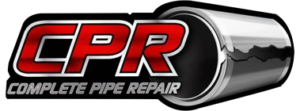Pooling Water Around Foundation? Prevent Basement Floods in Dayton
Standing water around your home’s foundation is more than just a nuisance—it seriously threatens your basement’s structural integrity and indoor air quality. In Dayton’s rainy seasons and spring thaw, poor drainage can lead to seepage, mold, and costly repairs. This guide details common causes of foundation flooding, simple prevention tactics, and when to enlist the help of a professional for solutions.
1. Common Causes of Foundation Pooling
- Poor Grading: Soil that slopes toward your foundation channels rainwater directly to vulnerable areas.
- Clogged Gutters & Downspouts: Debris prevents proper runoff, causing overflow that soaks the ground at the foundation’s base.
- Blocked Exterior Drains: Leaves and sediment can clog trench drains and catch basins, leading to overspill.
- Hydrostatic Pressure: Saturated soil exerts pressure against basement walls, forcing water through cracks or porous materials.
2. DIY Prevention Steps
- Check Grading: Ensure the soil around your home slopes at least 6 inches downward over 10 feet to direct water away.
- Clean Gutters & Extend Downspouts: Clear leaves and attach extensions to disperse water at least 5 feet from the foundation.
- Inspect Exterior Drains: Remove debris from trench drains, catch basins, and storm‑drain inlets to maintain free flow.
- Seal Minor Cracks: Use hydraulic‑cement patching compounds on small foundation cracks to block seepage.
3. Recognizing Advanced Warning Signs
- Recurring Basement Dampness: If your basement walls or floors show moisture despite basic fixes, you may have a drainage failure.
- Efflorescence or Salt Stains: White powdery deposits signal persistent water intrusion.
- Musty Odors or Mold Spots: Visible mold or mildew indicates long‑term moisture issues that impact air quality. Our drain backup prevention guide explains more about drain backup prevention in Dayton.
4. Professional Solutions from CPR
- Basement Drain Cleaning: High‑pressure hydro jetting clears interior footing drains and prevents clog‑induced backups. See how we handle pipe blockages in our Hydrojet vs. Mechanical Drain Cleaning post.
- Exterior French Drain Installation: We excavate, install perforated pipe in gravel trenches, and restore landscaping to channel water safely away.
- Sump Pump Systems: Installing a battery‑backed sump pump ensures continuous removal of infiltrating water, even during power outages.
- CIPP Pipe Lining: For damaged footing drains, cured‑in‑place pipe lining rehabilitates existing lines without extensive digging—learn about our trenchless methods in CIPP Lining in Miami Valley.
5. Maintenance & Long‑Term Prevention
- Annual Inspections: Schedule a video pipe inspection each spring to catch hidden blockages or pipe fractures. Details are on our video inspections page.
- Gutter Guards & Leaf Screens: Reduce debris buildup and minimize clogging risk.
- Regular Sump Pump Testing: Run your pump monthly and inspect the discharge line for freezing or blockages.
- Landscaping Considerations: Plant water‑loving vegetation away from foundation walls and avoid heavy mulch beds that retain moisture.
Don’t let pooling water undermine your home’s foundation. For comprehensive basement flood prevention and repair services in Dayton, trust CPR’s experienced team. Visit our Drain Cleaning vs. Sewer Repair page or call today to schedule a professional assessment!
